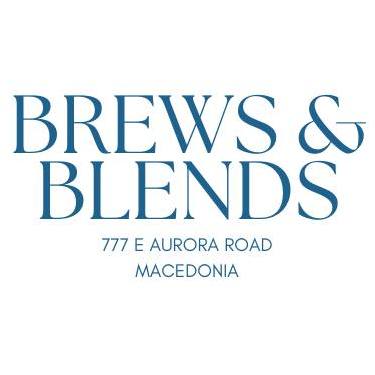By Ellie Rice, Caroline Orzechowski, Alayah Davis
Cramps, bloating, and bleeding. I spend days wasting away, deteriorating from the inside out. What about that yells luxury? Speaking from experience, nothing. The so-called “tampon tax” is a term coined by feminist movements describing what is considered to be an unfair tax placed on menstrual sanitary products, such as pads and tampons. This tax doesn’t cross the minds of many often, but it affects all buyers- disproportionally for low-income women. Themovements claim that because the menstrual cycle is not optional and occurs monthly, these products should be tax-exempt, like other necessary products, such as groceries. Although this is a valid concern, some argue that the money generated by the added tax is needed for a stimulated economy, and should not be abolished. The arguments supporting the removal of the tampon tax say that this taxation is a targeted move and singles out people with periods, but that is untrue.
Yes, feminine hygiene products are a necessity and should be tax exempt as such, but no state has ever presented shoppers with a unique tax specifically for these products (Tampon Taxes, 2020).
Luxury tax is a tax placed on goods that are considered expensive or nonessential, such as boats, expensive cars, or jewellery. This is what people are referring to when they talk about the tampon tax, but in no way does this sound equivalent. In what way does the use of tampons and pads sound like a luxury? Although tampons don’t have the significant tax increase that comes with the luxury tax they are still seen and addressed as a luxury and not a necessity. In fact, they are a necessity for over half the population in the United States. Young girls and women need tampons and pads every month in order to go to school, work, play sports, or attend any social events. Menstrual products are not used for an optional process, so why are they taxed as such?
Since these items are a necessity we believe that they shouldn’t be taxed, items like this are called tax exempt. Tax exemptions are transactions that are free from tax at the federal, state, or local level. Most people are familiar with tax exemptions on groceries, but even then there are some blind spots. Some food products and beverages are exempt including bread, meat, and milk, whereas other food products like alcoholic beverages, candy, and even carbonated drinks are taxed. Other products that are not taxed are over the counter drugs as well as prescription drugs.
A notable comparison drawing attention to the imbalance between taxation of mens and womens products would be Viagra; a drug often prescribed to men suffering from erectile dysfunction. Despite this drug not being a “necessity” it is not taxed in any state in the United States excluding Illinois. While yes, Viagra is often a prescription drug and thus tax-exempt in most states, is it really more of a “necessity” than menstrual hygiene products? On the other hand tampons and other feminine hygiene products aren’t seen as a necessity in a majority of state’s tax codes, but some states have repealed this tax. New York Times journalist Karen Zraick stated that “Between 2016 and 2018, Nevada, New York, Florida, Connecticut and Illinois eliminated the tax, while many other states introduced bills to do so. (Five states already had an exemption on the books, and five others do not have sales tax)”(2019). This means that 35 out of the 50 states still have taxes on feminine hygiene products and this shows that there are inconsistencies throughout tax codes that need to be improved.
Tampon tax is often compared to the “pink tax” which is a larger issue that encompasses the tampon tax. The pink tax refers to a lot more women’s products such as razors, deodorant, clothing, and even young girl’s toys costing more than men’s products despite being of the same quality or ingredients. These two are commonly mistaken for one another, but the pink tax movements have been around for much longer than the tampon tax. The pink tax has been around since the early 90s and overtime price inflation has increased. In the women’s magazine Good Housekeeping they state that “the pink tax has cost a 30-year-old woman more than $40,000. A woman in her 60s will cough up nearly $82,000 in fees that men don’t have to pay”(Dreher, 2019). Additionally, this is extremely harmful for women with lower income households because after all these years that money will total up for something that could’ve been used for food, school supplies, transportation, etc.
Despite the arguments coming from movements supporting the removal of the tampon tax, opposers say removing this tax will harm the economic stability of the states. Sales taxes are added to shopper’s bills in 45 out of 50 of the United States and help to stimulate the state’s economy and increase funding for schools, human services, and other programs provided by the state. Cutting out feminine hygiene products from state’s taxes negatively impacts their annual revenue- New York alone was down nearly 14 million dollars in 2016 after exempting pads and tampons from their state sales tax. Should we really take this measure if it has such negative economic impacts?
According to Nicole Kaeding of the Tax Foundation, “removing taxes on these products puts other items at risk of higher rates and different products can be regarded as necessities by different groups.” Essentially, exempting sales tax puts states at risk for losing revenue, and pushes them to consider raising their general sales tax as a whole, as well as raises the level of concern about other tax-exempt inconsistencies (D’Souza, 2020). The move to stop taxingmenstrual hygiene products may help users save money in the short term, but they may actually find themselves hurt by the financial repercussions to the state in the long run.
In addition to the harsh negative economic impact of this proposed tax exemption, there would also have to be another conversation discussing other “necessary” products that are still included in the state’s sales tax. Pads and tampons are not alone in the “necessary but still taxed” group. Some of the items included in that group are toilet paper, diapers, and utilities such as gas and water. If pads and tampons are exempt from tax, then shouldn’t these other necessary items be as well? Once again, the longer the list of tax exemptions a state has, the longer the number of dollars spent is at the bottom of your receipt.
The best thing for the United States to do is look at taxing state-by-state. The United States has a wide variety of median household incomes, meaning what individuals can and cannot afford will vary. In May of 2019, Lawmakers in Virginia reduced the tax on menstrual products by 2.5 percent, rather than eliminating it completely. They call this bill the Dignity Act, allowing the state to continue to make revenue while simultaneously protecting lower-income women and families from further being financially hurt. Before this law went into action, the tax had been up to 7 percent in some parts of the state. “For the young family buying diapers for those purchasing other essentials for their health, the savings because of this bill will add up and be appreciated” says Del. Kathy Byron.
In Georgia, lawmakers decided on putting $1.5 million dollars out of their 2020 state budget aside to provide free menstrual products to low-income women in school and community centers, including many girls who were missing school because they are unable to afford these products. According to NPR article “’Tampon Tax’ Repeal Benefits Women But Comes At A Cost To States”, the American College of Obstetricians and Gynecologists found nearly half of low-income women struggled to buy both food and menstrual hygiene products over the last year (2019). “I’m elated that recognition is going to be given to the kids that need it most,” says Georgia State Rep. Kim Schofield, “This is a gap that the state has graciously decided to fill.”
Tampon tax puts up significant barriers for low-income women and their daughters.
Millions of people across the states are in need of menstrual products and are struggling to afford them. This is an issue. In an NPR article from 2018 titled “More States Move To End ‘Tampon Tax’ That’s Seen As Discriminating Against Women”, Ohio state Representative Brigid Kelly confirms that “The sales tax on these items does not amount to much…But when you’re trying to figure out if you can give your kid milk money or if you have enough to get your own lunch then it is impactful in a very significant way.” With around 21 million women living in poverty across the United States, how do we determine if this taxing these necessary products is ethical?
It’s not a woman’s fault that she gets her period every month, and it is certainly not a luxurious thing. Due to high-poverty areas, some states and counties require different solutions for handling tax; and womens products do not fall short from that. This further proves how confusing tax codes can be, thus proving that it should be the individual states decision.
Whether its tax reduction, removal, or the providing of menstrual products, states need to take action one way or another to provide support for their women during the non-optional monthly period. Opposers of the tampon tax movement have a fair point in noting that there has never been a specific tax just for feminine hygiene products and that states risk losing annual profit, but these arguments do not outweigh the benefits of the tampon tax removal. Protecting low-income women and families and recognizing the needs of feminine hygiene product users is an important and progressive step for our country. States have the power to manipulate the general sales tax to encourage these benefits, and should take the steps necessary to join the 15 tampon tax-free states. If you had something essential for functioning in your everyday life, wouldn’t you want it to be recognized and respected as necessary too?
The collaborative Op-Ed above was written by Nordonia High School seniors enrolled in College Writing 1, a dual-enrollment course with college credit awarded through Kent State University. The views expressed are of the students and not necessarily of Nordonia High School.
References
Dreher Features Director As the Features Director for Woman’s Day and Good Housekeeping,
- (2019, October 15). Have You Heard of the Pink Tax? If Not, Prepare to Be Outraged. Retrieved November 11, 2020, from https://www.goodhousekeeping.com/life/money/a27409442/what-is-pink-tax/
D’Souza, D. (2020, August 25). What is the Tampon Tax? Retrieved November 11, 2020, fromhttps://www.investopedia.com/tampon-tax-4774993
Hawley, S. (2018, April 09). Where Do Our Sales Taxes Go? Retrieved November 11, 2020, from
http://mrsc.org/Home/Stay-Informed/MRSC-Insight/April-2018/Where-Do-Our-Sales-Ta xes-Go.aspx
Holter, E. (2019, March 25). Northam signs bills cutting so-called ‘tampon tax’. Retrieved November 11, 2020, from
https://www.loudountimes.com/news/northam-signs-bills-cutting-so-called-tampon-tax/ar ticle_4038bcfa-4f31-11e9-a711-e7f18817582e.html
Kaeding, N. (2020, July 30). Tampon Taxes: Do Feminine Hygiene Products Deserve a Sales Tax Exemption? Retrieved November 11, 2020, from https://taxfoundation.org/tampon-taxes-sales-tax/
Prabhu, M. (2019, April 09). Georgia OKs providing menstrual products to low-income girls, women. Retrieved November 11, 2020, from
https://www.ajc.com/news/state–regional-govt–politics/georgia-oks-providing-menstrual
-products-low-income-girls-women/8wRDKwffieuHFslCsg0TML/
Sagner, E. (2018, March 25). More States Move To End ‘Tampon Tax’ That’s Seen As Discriminating Against Women. Retrieved November 11, 2020, from
https://www.npr.org/2018/03/25/564580736/more-states-move-to-end-tampon-tax-that-s- seen-as-discriminating-against-women
Smith, S., & Gollardo, C. (2019, March 15). ‘Tampon Tax’ Repeal Benefits Women But Comes At A Cost To States. Retrieved November 11, 2020, from
https://www.npr.org/2019/03/15/703687071/tampon-tax-repeal-benefits-women-but-com es-at-a-cost-to-states
Zraick, K. (2019, July 12). 22 States Considered Eliminating the ‘Tampon Tax’ This Year. Here’s What Happened. Retrieved November 11, 2020, from https://www.nytimes.com/2019/07/12/us/tampon-tax.html






















